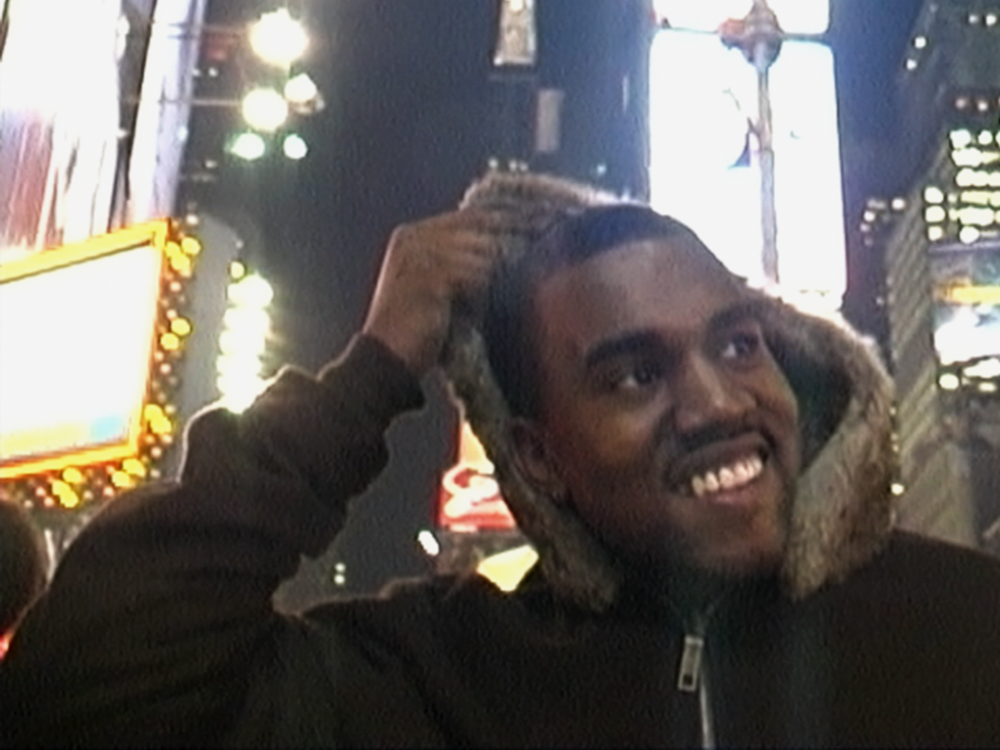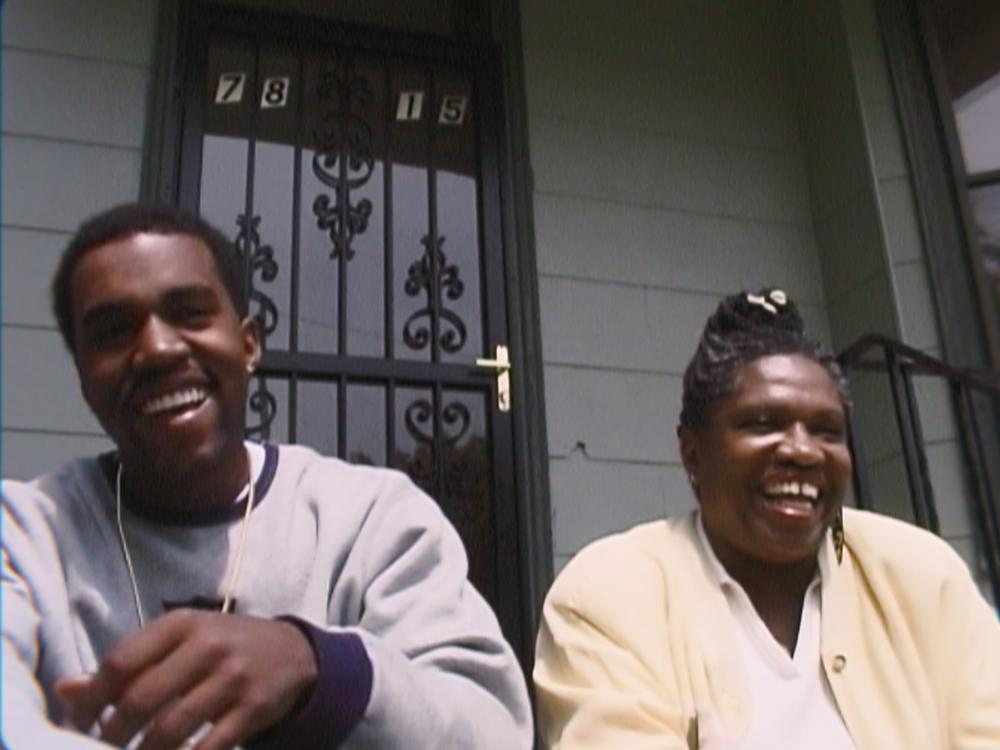Section Branding
Header Content
Netflix's 'jeen-yuhs: A Kanye Trilogy' is (mostly) genius
Primary Content
Netflix's new docuseries, jeen-yuhs: A Kanye Trilogy, is truly genius...for the first two-thirds, at least.
That's not a bad average for an ambitious project: Assembled from footage recorded by old friends who have been trailing the mercurial rap star with a camera for over 20 years, jeen-yuhs spans more than four hours divided into chunks about 90 minutes each.
The first two episodes cover an intense time from the late 1990s until the mid 2000s, when Kanye had to convince the rap world he was more than just a talented producer. Unlikely as it seems now, back then, rap labels and executives weren't sure that this skinny kid who had cooked up compelling beats for Jay-Z, Jermaine Dupri and Foxy Brown could really sell records on his own as a rapper – particularly after Kanye was in a car accident that created serious concerns about whether he could ever spit rhymes again.
The last installment ranges from the mid 2000s to 2020, when his friends – filmmakers Clarence "Coodie" Simmons and Chike Ozah – grew distant from Kanye and couldn't provide the fly-on-the-wall perspective that makes the first two parts such a treasure. Here, the most valuable moments are when Simmons lets the camera run as Kanye jumps from topic to topic in a way that appears as if his mind is racing too fast for his mouth to keep up.
Keeping the focus on Kanye's music
Simmons, a former standup comic who met Kanye in the mid-1990s while hosting a groundbreaking Chicago-based cable access show on rap called Channel Zero, is the viewer's guide through much of this. His narration and observations help mold what often seems like a collection of home video clips into a compelling story.
Indeed, the best thing about the first two-thirds of jeen-yuhs is how it centers the narrative on Kanye's music.
As the docuseries begins, Kanye is desperate for a record deal as a recording artist. He has produced a sizable chunk of Jay-Z's landmark record The Blueprint, but finds even the executives at Hova's label Roc-A-Fella records wish he would stop bugging them and just keep cranking out dope beats for other artists.
Here is where jeen-yuhs really pulls us into Kanye's world – in one key scene, he walks the halls of Roc-A-Fella's New York headquarters, jumping into offices to perform his songs for random executives. He has to pull out his retainer to spit rhymes properly.
Kanye eventually admits to the camera that he's not like typical MCs. At a time when gangsta rap is hot, he hasn't got street cred as an outlaw. He talks openly about being a momma's boy. He raps onstage wearing a backpack.
"My mother's an English teacher and she used to cultivate me," he adds, noting that his dad was a Christian marriage counselor. "I feel like I can't sell to you that I'm finna come up and take your life...just because I think that's hot or what's industry-ready."
Speaking of Kanye's mother, Donda West; her presence casts a long shadow. Even casual fans know how much she has influenced his music, and in the first two installments of jeen-yuhs, we see them together a lot. It's obvious how her doting, powerful belief in Kanye fuels his own outrageous self-confidence (the second episode opens with home video footage of Kanye, at about 13 years old or so, rapping confidently at a family gathering).
When she dies of coronary artery disease and other factors in 2007 – the docuseries features audio of the 911 call – jeen-yuhs implies this loss presages a troubling series of issues for Kanye, whose public outbursts grow more erratic after his mother's passing.
Seeing the real stories behind a legend
Fans will see behind the scenes of key moments in Kanye's legend. After he finally got signed by Roc-A-Fella, the rapper was in a 2002 car accident which broke his jaw in three places – leading him to create a song while his mouth was still wired shut, called Through the Wire.
The docuseries' second installment shows Kanye meeting with his dentist, pushing his recovery strategy to get back to work, while also filming footage that would be used in the song's video. Because his record label wouldn't spend money on his album, Kanye is also shown recording with friends, including Jamie Foxx, who had a professional-level studio in his home, complete with an engineer.
As he plays an early version of Through the Wire for super-producer Pharrell Williams – who flips out when he hears it – you can't help but wonder: Why doesn't Kanye's label see how big this record is going to be? Eventually, Kanye spends $30,000 of his own money to make the song's video, with Simmons and Ozah in the directors' chairs; the video's success convinces Roc-A-Fella to finally step up and finance production for his debut record.
That album — 2004's The College Dropout – would eventually sell more than 3 million copies and be nominated for 10 Grammy awards.
More than filling out stories behind Kanye's legend, these scenes show how the rapper constantly bet on his own talent and vision – even when few others shared that confidence. Whenever anyone doubted his skills or his promise, he was ready to slap a cassette tape in a machine and rap in their face until they got the message.
Unfortunately, as his career blew up, Kanye became less interested in having his old friends around to film him. The growing distance produces less intimate footage, turning jeen-yuhs' third episode into a grab bag collection of headlines centered on Kanye's erratic behavior.
(In one embarrassing moment at a Grammys afterparty, Kanye keeps calling Simmons by his friend Chike Ozah's name, reinforcing how far outside his inner circle the filmmakers had found themselves.)
Still, there are telling moments, even in the third installment. Simmons and his camera travel with Kanye overseas, where the rapper begins speaking so erratically at a small gathering, the director stops filming.
"Have you guys ever been locked up in handcuffs and put into a hospital because your brain was too big for your skull?" Kanye asks, his voice's diction sounding markedly different than in the docuseries' earlier installments. "I took bipolar medication last night to have a normal conversation and turn alien into English."
Simmons, whose voice pops up regularly elsewhere in the docuseries to add context, declines to explain much in moments like this. Instead, he lets the footage do the most of talking, showing Kanye pontificating in tough-to-follow monologues at a home/recording studio in Wyoming while Justin Bieber looks on.
There's also a lot missing in this final episode, including Kanye's marriage to Kim Kardashian (and their contentious split) and details about the four children they have together.
In the end, this faltering third installment implies rather than directly states the answer to the largest question it poses from the very beginning: What happened to Kanye West?
And is he okay now?
Copyright 2022 NPR. To see more, visit https://www.npr.org.


